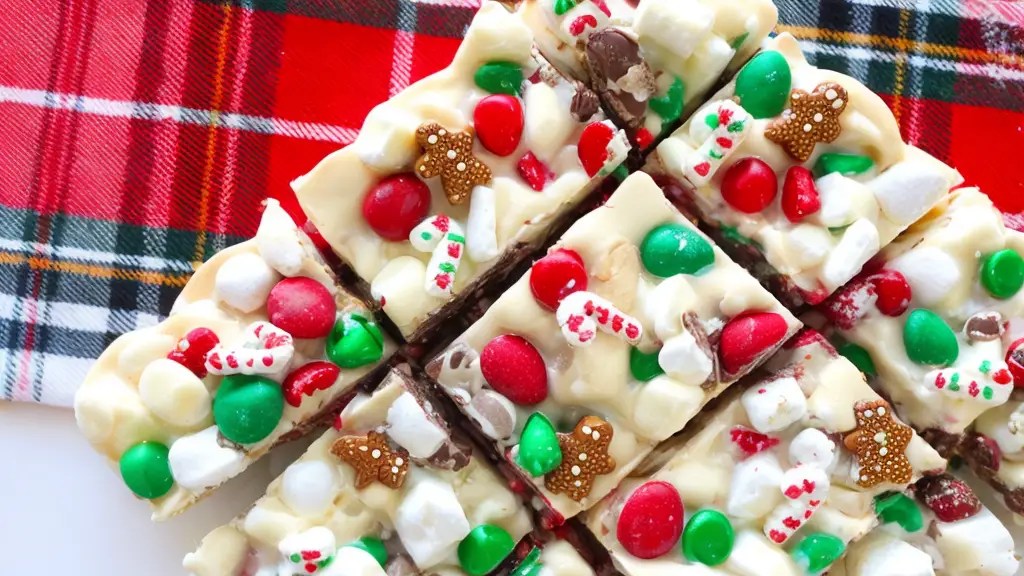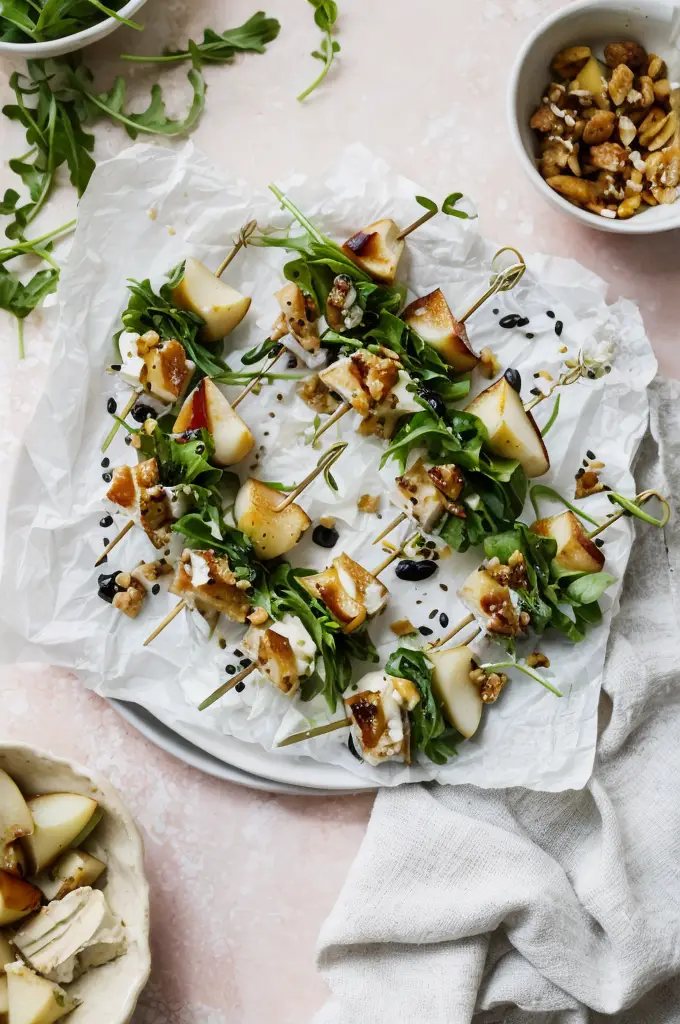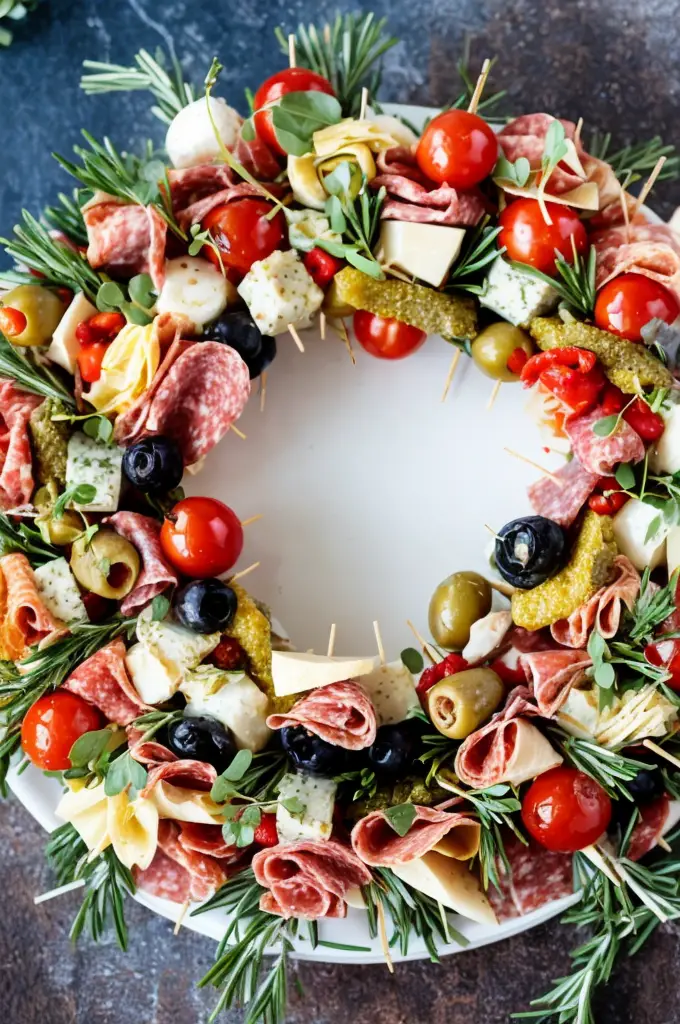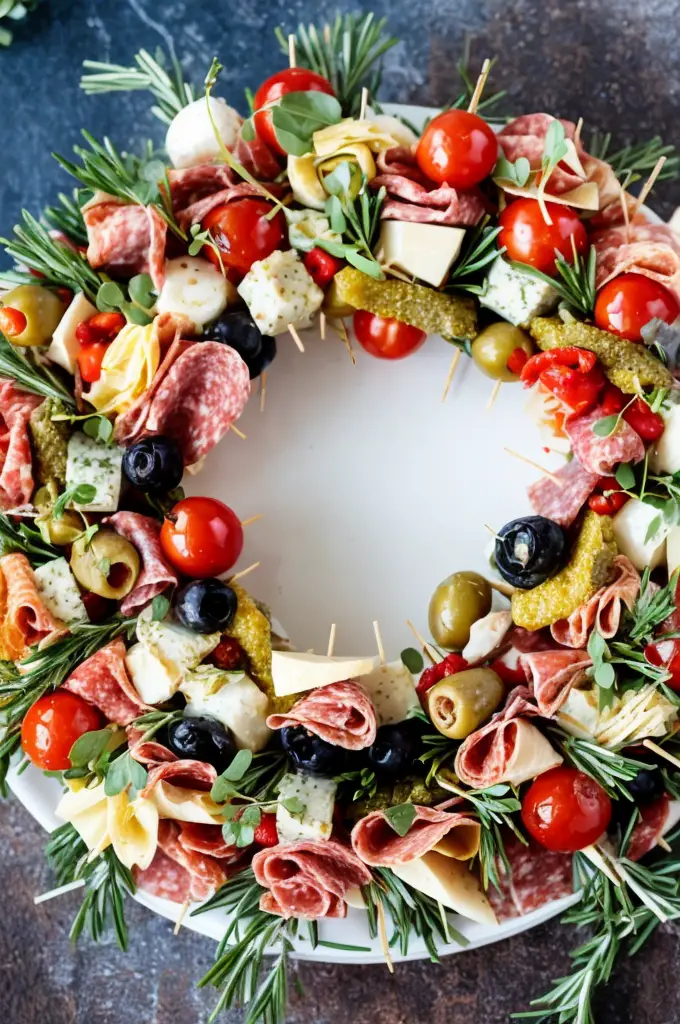Delicious Christmas Rocky Road Recipe for Festive Treats
This Delicious Christmas Rocky Road recipe is the ultimate festive treat that combines scrumptious chocolate with marshmallows, nuts, and a sprinkle of holiday cheer. Perfect for sharing with family and friends during festive gatherings, this no-bake dessert is not only easy to make but also visually stunning. Featuring a rich chocolate base topped with gooey marshmallows and crunchy nuts, each bite offers a delightful blend of sweetness and texture that embodies the essence of the holidays.
As you whip up this delightful Christmas Rocky Road, your kitchen will be filled with the warm, inviting aromas of melting chocolate mingling with the nutty scent of roasted almonds. The vibrant colors from the various ingredients make this treat not only delicious but also a feast for the eyes, truly capturing the spirit of the season. Gather your loved ones and join in the fun of creating these festive delights together!
Quick Recipe Highlights
- Flavor Profile: A harmonious blend of rich chocolate and the sweetness of marshmallows, perfectly complemented by the crunch of nuts.
- Texture: A delightful combination of smooth, creamy chocolate and chewy marshmallows, with a satisfying crunch from the nuts.
- Aroma: The warm scent of melted chocolate with hints of vanilla and roasted nuts fills the air, creating a comforting atmosphere.
- Visual Appeal: The vibrant colors of the marshmallows and nuts against the dark chocolate create an eye-catching contrast, perfect for festive displays.
- Skill Level Needed: This recipe is perfect for beginners, requiring minimal cooking skills and only a few simple steps.
- Special Equipment: You’ll need a microwave or a double boiler for melting the chocolate, along with a baking dish to set the mixture.
Recipe Overview
- Difficulty Level: This Delicious Christmas Rocky Road is classified as easy, making it perfect for novice bakers or seasoned chefs looking for a quick festive treat.
- Category: This dessert fits well into the sweet treats category, making it an ideal addition to festive spreads and dessert tables.
- Cuisine: While chocolate treats are popular worldwide, this recipe draws inspiration from traditional no-bake desserts often enjoyed during holiday seasons.
- Cost: The ingredients are budget-friendly, with a total cost of around $15, making it accessible for everyone eager to celebrate the holidays.
- Season: This recipe shines brightest during the festive winter season, bringing joy to celebrations and gatherings with family and friends.
- Occasion: Ideal for Christmas, holiday parties, or as a homemade gift, this dessert adds a special touch to any festive occasion.
Why You’ll Love This Recipe
This Delicious Christmas Rocky Road will captivate your palate with its unique taste and texture that perfectly melds chocolatey sweetness with crunchy undertones. Every bite delivers a luscious chocolate experience that is dynamically coupled with the soft chewiness of marshmallows and the satisfying crunchiness of nuts, providing an exciting mouthfeel. You can’t go wrong with this seasonal treat that is sure to delight chocolate lovers and dessert aficionados alike.
Convenience is key, and this recipe offers the benefit of being effortless to prepare. It requires no baking, significantly cutting down on time and allowing you to quickly create delicious treats, even if you’re pressed for time during the holiday rush. The straightforward steps make it easy for everyone, from experienced bakers to kitchen novices, to participate in the joy of making this festive treat.
Nutritionally, while it is a sugary indulgent, Rocky Road can be modified slightly for those looking for some healthier facets. By opting for dark chocolate and adding nuts, you acquire beneficial fats and proteins that provide energy. The presence of marshmallows adds a small amount of fun carbohydrates which can be enjoyed in moderation.
This recipe has a wonderful social and entertaining value, as it encourages sharing and creates moments of joy in its preparation. Gather your loved ones and indulge in the fun of crafting the perfect holiday treat together. These delicious squares can easily be packaged as gifts, delighting friends and neighbors during the holiday season.
Lastly, cost-effectiveness sets this recipe apart. With minimal expenses needed for abundant flavors, preparing this festive delight can fit well within any budget. Plus, it yields a dozen servings, perfect for spreading the festive joy without breaking the bank, allowing everyone to partake in delicious holiday treats.
Historical Background and Cultural Significance
The history of Rocky Road dates back to the 1850s when it was created as an ice cream flavor in the United States. It was often made with chocolate, almonds, and marshmallows, symbolizing the prospect of a brighter future after a tumultuous time, thus its name “Rocky Road.” This delightful treat quickly grew in popularity, especially during the holiday season, when families sought out sweet indulgences to celebrate togetherness and joy.
Culturally, Rocky Road represents more than just a dessert; it embodies the spirit of holiday festivities and community. It encourages families and friends to gather in the kitchen to create delicious treats, fostering connections and creating lasting memories amid the holiday hustle and bustle. Each family may have their own twist on the classic recipe, bringing unique elements and traditions into their interpretation of this beloved dish.
Over the years, the recipe has evolved, transitioning from its original ice cream form to various baked and no-bake versions. The inclusion of different mix-ins, such as various types of nuts, dried fruits, or even marshmallow flavors, reflects the personal preferences of home bakers and the modern culinary trend of customization.
Regional variations also play a significant role in this dessert’s rich tapestry. In some cultures, Rocky Road might incorporate local nuts or flavorings, providing a distinct twist that aligns with local tastes and traditions. These adaptations highlight the versatility of Rocky Road, making it a continually evolving dish cherished throughout the world.
Ingredient Deep Dive
Chocolate is the star ingredient in the Delicious Christmas Rocky Road, and its cultural significance is immense. Historically, cacao has been celebrated for its delightful taste and rich implications within various societies, often utilized in ceremonies and celebrations. When selecting chocolate for your recipe, aim for high-quality options; dark chocolate offers a richer flavor and beneficial antioxidants, while milk chocolate can add sweetness.
Marshmallows add a playful, fluffy texture that contrasts beautifully with chocolate. Originally created as a medicinal pastille, marshmallows have since evolved into the sweet treat we adore today. Always choose soft, fresh marshmallows, which will better hold up in the mixture. They can be stored in a cool, dry place to prevent them from hardening.
Nuts, such as almonds or walnuts, provide a necessary crunch within the Rocky Road. Their cultural significance is tied to harvest celebrations and communal feasting. When selecting nuts, look for fresh, unsalted varieties for the best flavor. Store your nuts in airtight containers away from sunlight to maintain their crisp texture.
Common Mistakes to Avoid
- Overheating chocolate: Melt the chocolate gently, using a microwave or double boiler to avoid scorching it, which can lead to a grainy texture.
- Not using fresh marshmallows: If your marshmallows are stale, they won’t provide the desired chewy texture. Always check for freshness before use.
- Packing the mixture too tightly: When pressing the mixture into the baking dish, avoid compacting it too tightly, which can affect texture and result in a hard dessert.
- Skipping the chilling step: Allowing the Rocky Road to chill properly in the refrigerator is crucial for it to set correctly, ensuring perfect cutting and shaping.
- Ignoring ingredient quality: Using subpar chocolate or stale nuts will impact the overall flavor; always opt for high-quality ingredients for the best results.
- Making substitutions without testing: Some substitutive ingredients may alter the dessert’s chemistry, leading to undesirable outcomes; be mindful when switching elements.
- Not preparing hands with oil: When cutting the set mixture, lightly oiling your knife or hands can help prevent sticking, making the process neater.
- Cutting too soon: Allow the mixture to set completely before cutting to ensure clean, even squares and the right texture.
Essential Techniques
Melting chocolate properly is key. This method is important because improper melting techniques can lead to burnt chocolate, ruining the entire dessert’s flavor. To master this skill, use either a microwave in 30-second intervals, stirring in between, or a double boiler that allows gentle melting. Look for a smooth, glossy appearance as the visual cue for success.
Mixing ingredients is another essential technique for this recipe. Carefully folding in the marshmallows and nuts ensures even distribution throughout the chocolate, creating a harmonious blend of flavors. Avoid over-mixing, which can break the marshmallows down and ruin the desired texture.
Setting the mixture is crucial to achieving a proper Rocky Road. By allowing it to chill in the refrigerator for at least two hours, you give a chance for the chocolate to solidify and meld with other ingredients. The visual cue for success is when the mixture feels firm to the touch and is easy to cut into squares.
Pro Tips for Perfect Delicious Christmas Rocky Road
1. For a fun flavor twist, experiment with different types of chocolate like white or milk chocolate for varied sweetness levels.
2. Toast the nuts lightly in the oven to enhance their flavor before mixing them in with the melted chocolate.
3. Add a pinch of sea salt or a drizzle of caramel to elevate the overall taste profile.
4. Use silicone molds for a unique shape, making your treats even more festive and fun.
5. If you’re making this recipe in warmer climates, consider placing the Rocky Road in a cooler area to prevent melting during the setting process.
6. Pair with a scoop of ice cream for a delightful dessert experience that combines textures and temperatures.
7. For an even more delightful presentation, sprinkle some crushed peppermint candy on top for added festive flair.
8. Wrap pieces in decorative cellophane or boxes for homemade gifts during the holidays that are beautifully presented and delicious.
Variations and Adaptations
Rocky Road lends itself well to regional variations. For instance, in Australia, adding coconut transforms it into a tropical version. Incorporating dried fruits like cherries or cranberries is another great seasonal adaptation to infuse additional festive flavors. For those with dietary restrictions, gluten-free cookies can replace the nuts or marshmallows to cater to allergies or preferences.
Seasonal adaptations include using autumn spices like cinnamon or nutmeg to evoke additional warmth during colder months. For flavor variations, considering adding peanut butter or almond butter for a creamy twist, which melds wonderfully with the chocolate and enhances the nutty flavor profile.
Texture modifications can be made by experimenting with crunchy rice cereal, adding even more layers of crunch and flavor to each piece. Another way to present these treats can involve creating parfaits layered with whipped cream and chocolate sauce to offer a light yet indulgent twist.
Serving and Presentation Guide
When it comes to plating your Delicious Christmas Rocky Road, cutting them into uniform pieces can enhance the appearance, ensuring a clean and tidy dessert display. Garnishing options like a dusting of powdered sugar or a drizzle of melted chocolate can elevate the visuals. For a traditional accompaniment, consider serving alongside a scoop of vanilla ice cream for a delightful contrast in temperature and texture.
Modern serving suggestions can include offering these treats in individual cupcake liners, presenting them as delightful bites at holiday parties. Remember to consider temperature when serving; they are best enjoyed at room temperature to maintain the perfect texture.
For portion control, cut into smaller squares for an easy grab-and-go treat, allowing guests to enjoy this delightful dessert without overindulging.
Wine and Beverage Pairing
When it comes to pairing beverages with your Delicious Christmas Rocky Road, rich red wines such as Merlot or Zinfandel create a beautifully complementary experience, enhancing the chocolate flavors. For a sparkling alternative, consider Prosecco, adding a refreshing note that contrasts well with the sweetness of the dessert.
For non-alcoholic options, rich hot chocolate served with a swirl of whipped cream mirrors the chocolatey delight of the treat, creating a warm and cozy pairing ideal for holiday gatherings. Alternatively, consider serving chai tea, whose spices can enhance the flavors of the Rocky Road, making it an enjoyable palatable choice.
Ensure that beverages are served at optimal temperatures – chilled wines and warm drinks create an inviting atmosphere for your festive celebration.
Storage and Shelf Life
Storing your Delicious Christmas Rocky Road requires a few tips to optimize freshness and taste. Keep it in an airtight container at room temperature for up to a week. If you live in a warm climate or wish to prolong shelf life, these treats can be stored in the refrigerator for up to two weeks.
For longer-term storage, freezing is an excellent option. Wrap each piece in plastic wrap and place them in a freezer-safe container. They can maintain their quality for up to three months in the freezer. Just ensure to let them thaw at room temperature before enjoying to bring back their delightful texture.
When reheating, avoid the microwave. Instead, let them sit out for a bit – allowing the chocolate to regain its creamy consistency without becoming overly melty or changing its texture.
Make Ahead Strategies
Preparing your Delicious Christmas Rocky Road ahead of time allows for smoother holiday planning. The mixture can be made up to two days ahead, stored in the refrigerator to set. This preparation not only saves time but also enables the flavors to meld, enhancing the overall taste.
Taking advantage of this recipe’s simplicity means you can freeze portions for a swift holiday dessert grab at a moment’s notice. Just be sure to allow for sufficient time for thawing to always achieve the desired texture just before serving.
Consider assembling the Rocky Road in stages—melting the chocolate one day and mixing the other. This method breaks down the workload, allowing fresh additions like nuts or toppings just prior to serving, maintaining their crunch for the ultimate festive treat.
Scaling Instructions
Halving the recipe is an easy adaptation for smaller gatherings, ensuring you won’t have an excessive amount of treats to store. When scaling down ingredients, be mindful to proportionately divide each component to maintain flavor balance.
If doubling or tripling the recipe for larger gatherings, ensure to have adequate mixing space and containers for chilling. You may need larger baking dishes or additional trays to accommodate the increased volume of chocolate mixture.
Consider adjusting the chilling time when scaling, as a larger amount may take longer to set properly. Always check for firmness before cutting to ensure the best texture.
Nutritional Deep Dive
Each piece of Delicious Christmas Rocky Road provides a delightful treat, containing a balance of macros such as carbohydrates from marshmallows, fats from chocolate, and proteins from nuts. When portioning, moderation is key, typically suggesting one piece per serving for a satisfying yet not overwhelming dessert experience.
In terms of micronutrients, the inclusion of nuts can contribute essential vitamins and minerals, providing health benefits such as healthy fats, fiber, and heart-healthy benefits. However, given the sugar content within the marshmallows and chocolate, it’s important to consider the overall intake when savoring this festive delicacy.
For those managing their diet, analyzing total caloric intake serves beneficial. As part of a balanced holiday indulgence, savoring a piece can fit within a well-rounded plan when accounted for during festive meals.
Dietary Adaptations
Gluten-free adaptations can be made by ensuring that the chocolate and any added ingredients are certified gluten-free, allowing those with sensitivities to enjoy this holiday treat without worry. For those who are dairy-free, using dairy-free chocolate and plant-based marshmallows ensures everyone can partake in the festive cheer.
For vegan adaptations, swapping traditional marshmallows for plant-based versions and confirming chocolate choices are suitable creates a delectable treat that aligns with plant-based dietary restrictions. Additionally, for those following low-carb or keto diets, consider using a low-carb chocolate option and adjusting the sweetener choices accordingly.
Paleo diets may benefit from using honey as a sweetener and incorporating nuts while avoiding sugary marshmallows. Lastly, remember to communicate with guests about dietary modifications to ensure everyone can revel in the holiday joys.
The Recipe
Delicious Christmas Rocky Road
Serves: 12 pieces
Prep Time: 20 mins
Cook Time: 10 mins
Total Time: 30 mins
Kitchen Equipment Needed
- Microwave or double boiler
- Baking dish (9×9 inch)
- Mixing bowls
- Spoon or spatula
Ingredients
- 200g dark chocolate
- 100g unsalted butter
- 200g mini marshmallows
- 150g mixed nuts (e.g., almonds, walnuts)
- 1 tsp vanilla extract
Directions
- Melt the chocolate and butter together in a microwave or double boiler, stirring until smooth.
- Remove from heat and stir in vanilla extract.
- Add mini marshmallows and mixed nuts, stirring gently to combine.
- Pour the mixture into a greased baking dish, spreading it evenly.
- Chill in the refrigerator for at least 2 hours or until set.
- Once set, cut into squares and serve. Enjoy!
Recipe Notes
- Toasted nuts can intensify the flavor.
- For an extra festive touch, top with crushed candy canes.
- This recipe can easily be doubled or halved based on your needs.
Troubleshooting Guide
If your Rocky Road has a grainy texture, the most likely cause is burned chocolate – ensure to melt carefully in low increments. Look out for flavor imbalance; if it’s too sweet, consider cutting with a slight pinch of salt to balance flavors.
If the mixture doesn’t set properly, this may be due to inadequate chilling time or incorrectly proportioned ingredients. Always check that the chocolate mixture is evenly coated when adding in marshmallows and nuts to avoid uneven textures.
In case of stubborn sticking while cutting, slide a warm, oiled knife through the chocolate to help ease it out or warm the mixture slightly to soften it before attempting to slice again.
Recipe Success Stories
Readers have shared how they’ve enjoyed customizing this Delicious Christmas Rocky Road over the years, adding personal family twists and ingredients to create a unique blend of flavors. One reader shared a success with adding peppermint pieces, creating a winter wonderland taste that delighted everyone at their holiday party.
Another user recounted storing these treats in decorative tins, providing special gifts for co-workers and friends during the holiday season; feedback was overwhelmingly positive regarding the presentation and flavors, spreading joy far and wide.
Photography tips also emerged from many attempting to capture the vibrant colors of the Rocky Road. Many noted that natural lighting enhanced the chocolate’s gloss and made the festive colors pop, contributing to their social media success.
Frequently Asked Questions
Can I use milk chocolate instead of dark chocolate?
Absolutely! While dark chocolate provides a richer flavor, milk chocolate can be used for a sweeter, creamier taste. Be mindful of the sweetness level, as it can affect the balance of flavors in your Rocky Road.
How do I store leftover Rocky Road?
Store leftover Rocky Road in an airtight container at room temperature for up to a week. For longer shelf life, you can refrigerate it for two weeks or freeze it in portions for up to three months.
Can I add other mix-ins?
Definitely! Feel free to experiment with various mix-ins like dried fruits, coconut flakes, or different types of nuts. Each addition will impart unique flavors and textures to the Rocky Road.
What if my mixture doesn’t set properly?
If the mixture doesn’t set properly, it may not have been chilled long enough. Ensure to refrigerate the Rocky Road for at least two hours to allow it to solidify adequately.
Is this recipe nut-free?
If you need a nut-free version, simply omit the nuts from the recipe. You can replace them with extra marshmallows or even crunchy rice cereal for added texture.
Can I make Rocky Road vegan?
Yes! To create a vegan version, use plant-based chocolate and marshmallows. Ensure to check labels for any non-vegan ingredients, allowing vegans to join in on the holiday fun!
How long does it take to prepare the recipe?
The preparation time for this Delicious Christmas Rocky Road is about 20 minutes, with an additional 2 hours for chilling. Overall, you’ll be enjoying your delicious creations in a short time!
Can I use different flavors of chocolate?
Experimenting with different types of chocolate, like white or milk chocolate, can add fun new flavors. Just ensure to balance sweetness as needed when substituting chocolates.
Is it safe to eat the Rocky Road if I’ve made it a few days prior?
Yes, it is safe to eat as long as it has been stored in an airtight container. The chocolate and nuts help preserve it, but be mindful of how long it has been stored.
What can I serve with Rocky Road?
Rocky Road pairs wonderfully with a scoop of vanilla ice cream, whipped cream, or warm chocolate sauce. Offering these accompaniments elevates the experience and makes it even more indulgent.
Additional Resources
For those interested in variations of the Delicious Christmas Rocky Road, check out additional recipes that emphasize festive treats like peppermint bark, holiday cookies, and various chocolate confections. Supplementary technique guides covering chocolate tempering and ingredient substitutions provide valuable insight into enhancing your baking skills.
Explore ingredient information related to different types of nuts, chocolate varieties, and their respective origins to gain a deeper appreciation for what makes this treat a holiday favorite. Equipment recommendations, from quality mixing bowls to storage options, will aid in your baking adventure.
Seasonal variations might inspire you to adapt your recipes based on what’s available throughout the year, ensuring that your culinary creativity knows no bounds!
Join the Conversation
We love connecting with you! Share your own creations of this Delicious Christmas Rocky Road or post your personalized variations on social media using the hashtag #RockyRoadTreats. Show off that vibrant chocolatey delight and inspire others with your unique touches.
Don’t hesitate to leave your feedback or share your photography tips—the community benefits from varied perspectives and experiences as we all strive for the perfect holiday treat. Join in and share your thoughts about this seasonal favorite and let’s celebrate the joy of baking together!





